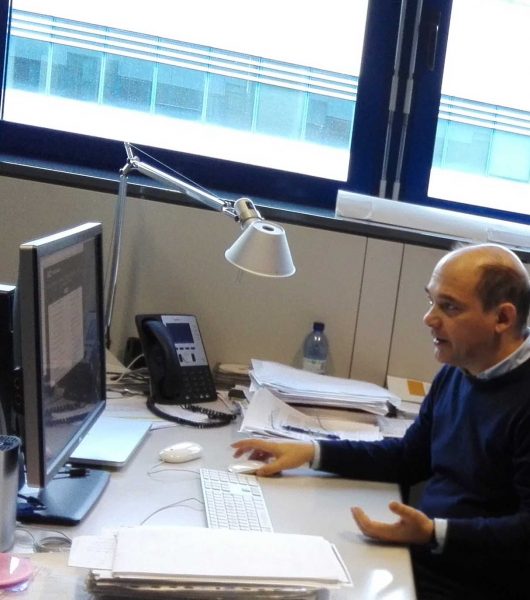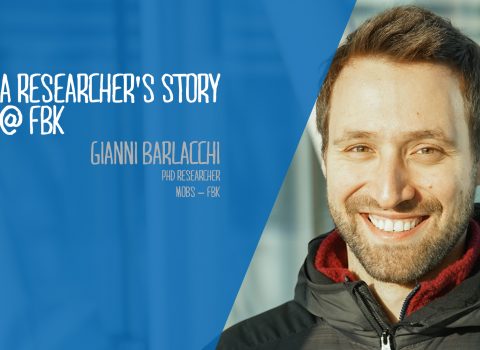How computational linguistics can help in creative tasks
What do the art of headlines in journalism have in common with wit, persuasion and exaggerations? Carlo Strapparava helps us explore the wonders of language connotations between the recent past and the near future in which the creativity incorporated in NLP technologies plays an increasingly important role
We live with infinite possibilities to make sense of the words we pronounce or write. If we think, for example, about our favorite poetry, we know how much every detail, each letter counts, as much and even more than for the visual languages we have become accustomed to after years of scrolling. Artistic creation is often based on the concept of fusion. Linguistic creativity is no exception, as demonstrated for example by the importance of metaphors in poetry.
Lakoff & Johnson’s Theory of Conceptual Metaphor dates back to 1980 and describes metaphor as a pervasive phenomenon of language, implemented daily by all speakers in the most varied types of linguistic exchanges. We live on metaphors both because they constitute a fundamental tool that we use every day in the most common communication situations, and because without them we could not express a myriad of abstract concepts that do not find literal expression in language. Metaphorical expressions are therefore a necessary phenomenon, not a “creative” alternative to literal use, but in many cases the only option available to the speaker; a stand-alone phenomenon, with its own rules and structures, separate from the literal language system.
Fusion can also be used to evoke a secondary concept, both with the intention of making the secondary concept well perceptible to the reader, and, on the other hand, to subtly evoke additional meaning. Current computational linguistics can do a lot in this sense and the automation of the linguistic creative process can be useful in cases where the input or the target must keep changing, creating automatic tools to support human production.
Carlo Strapparava, Oliviero Stock, Marco Guerini, Bernardo Magnini and other researchers at FBK have long been engaged in the study of artificial intelligence, natural language processing, word disambiguation, the so-called affective computing and creative language. These forms of linguistic creativity supported by technologies are made up of systems capable of suggesting directions or transformations in the linguistic structure to the human agent.
For example by changing the lyrics of a song as shown in the video above, or by devising a system that takes existing well-known expressions and innovates them by introducing a new concept from evolving news. The technology needed to do this consists of several steps that concern the selection of sortable concepts and the production of new expressions. The resulting applications include the ability to produce catchy news headlines or to generate slogans that allude to the news of the day. Additionally, by applying natural language processing techniques, we can also determine with reasonable approximation in which years a given text was written based on “clue words” that allow to triangulate the cultural climate of which it is a part. One aspect on which a similar investigation is currently underway is the study of exaggerations: false, subtle, persuasive and yet, to some extent, accepted in common sentiment.
An emblematic case study is Raymond Queneau’s masterpiece Exercices de Style, a collection of 99 retellings of the same story, each in a different style. Literary retellings date back to Erasmus of Rotterdam. There are the enigmistic ones (anagrams, apocopes, apheresis, letter permutations, lipograms), the rhetorical ones (litotes, metaphors, apostrophe), those with sectoral languages (geometric, gastronomic, medical, botanical), those with jargons and macaronic languages (with English words, French words or vulgar, insulting words) and the retellings in different text types (theatrical text, school essay, interrogation, tanka poetry, sonnet, telegram). Thus, the 99 texticules, as Queneau himself defines them with a pun, use a huge variety of figures of speech and language registers to retell us the same story over and over and aim to show us that infinite potentialities are implicit in word and language, which just need to be let free.
Emotions are not language entities but are appropriately expressed through language.
Feelings influence actions, thoughts and obviously the way we communicate.
(Carlo Strapparava)
Bibliography
- L. Birnbaum, O. Popescu, and C. Strapparava, (editors). Natural Language Processing meets Journalism – Proceedings of IJCAI 2016 workshop, New York, July 2016.
- C. Strapparava and Rada Mihalcea. “Affect detection in texts”. In R. Calvo, et al., (editors), Oxford Handbook of Affective Computing. Oxford University Press, December 2014.
- C. Strapparava, O. Stock, and R. Mihalcea. “Computational humour”. In R. Cowie, et al., (editors), Emotion-Oriented Systems: The HUMAINE Handbook, Cognitive Technologies, chapter 6.4. Springer, March 2011.
- M. Guerini, C. Strapparava, and O. Stock. CORPS: “A corpus of tagged political speeches for persuasive communication processing”. Journal of Information Technology & Politics, 5(1):19–32, 2008.
Cover picture (Jean Paz): “Cent mille milliards de poémes” (Cem mil milhões de poemas), 1973. Raymond Queneau. License: CC BY-NC-ND 2.0



